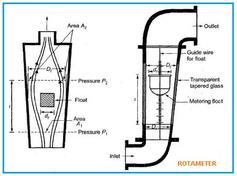Advantages and Disadvantages of Flow Nozzles
Advertisement
This article explores the pros and cons of using flow nozzles for fluid flow measurement. We’ll delve into their benefits and limitations to help you understand when they’re the right choice.
Introduction to Flow Nozzles
A flow nozzle is a type of differential pressure flow meter, similar to a venturi meter, but without the diverging cone section. Unlike an orifice plate, it features a curved inlet that reduces jet contraction. This design characteristic impacts its performance and applications.

Benefits of Flow Nozzles
Flow nozzles offer several advantages, making them suitable for specific measurement scenarios:
- Higher Discharge Coefficient: Flow nozzles boast a higher discharge coefficient compared to orifice meters. This means they are more efficient at converting pressure drop to flow rate.
- Suitable for Fluids with Solids: Unlike some flow meters, flow nozzles can handle fluids containing a moderate amount of solids, making them versatile in industrial applications.
- High Temperature/Pressure Steam Flow Measurement: They are well-suited for measuring steam flow at high temperatures and pressures, which is crucial in power generation and other heavy industries.
- High Flow Velocity Measurement: Flow nozzles can accurately measure high flow velocities, expanding their applicability to various flow regimes.
Limitations of Flow Nozzles
Despite their advantages, flow nozzles also have some limitations:
- Not Suitable for High Solid Content: Although they can handle some solids, flow nozzles are not ideal for fluids with a high percentage of solids. Excessive solids can lead to clogging or inaccurate readings.
- Lower Pressure Recovery: Flow nozzles have lower pressure recovery compared to other meters like venturi meters. This means they are not suitable for applications with very low-pressure heads.
Advertisement
 T&M
T&M 



